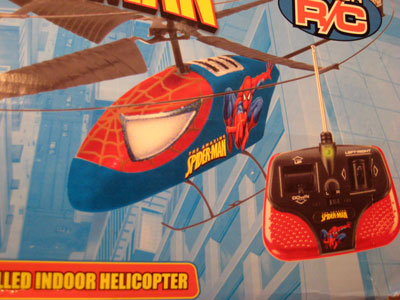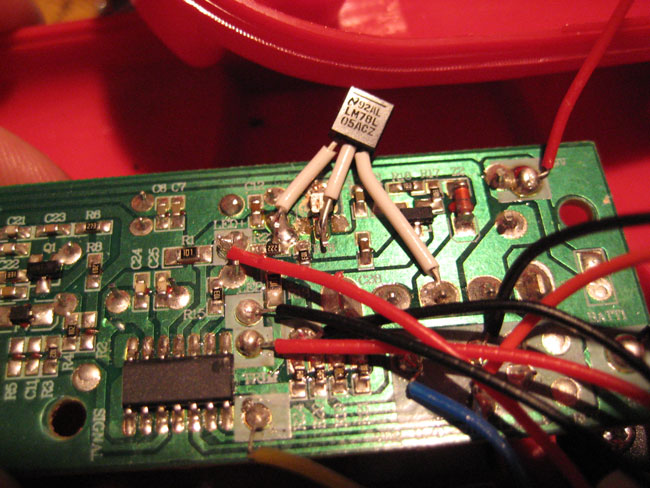

So we get back from the Maker Faire with two toy R/C helicopters from the Radio Shack booth (ahem...so much for "making" things...). My son selected the Wowee Flytech Bladestar. A cool design. The whole thing spins, and it uses the IR beam from the controller to orient itself, so the controls are always relative to the pilot and not the copter. It's amazing the simplifications possible when you don't need to worry about dizzy passengers.
My daughter picked up a more traditional Spiderman BladeRunner. After scouring the house for a 9V battery ("not included") we plugged it in, turned it on, and the red light on the controller was...dead. Test the battery, yes it's fine, but after charging up the copter, Nothing Happened when we tried the controls. The controller was obviously DOA.
Now at this point there's two ways to solve the problem. First you can gather up everything, put it back in the box, and head back to the store. Round trip to the nearest Radio Shack is almost an hour, and you must wait to do this when they're open. Or you can spend the time fixing it. Personally, I prefer soldering irons and meters to traffic and store clerks.
The controller opens up easily with a few screws (I love that about modern toys; when I was a kid stuff like this was frequently glued shut!). The small main board features a few dozen components, mostly passives, and a Magic Chip the Chinese have helpfully ground the labeling off of. I tried re-heating some solder joints that looked suspect, but still nothing. I start following the power. First it goes through a vanilla diode (there to keep you from frying the electronics if you stick the battery in backwards), then through another diode (probably a zener for the RF stuff). I check the pins on the magic chip. If the negative volt meter lead is hooked to ground, the meter usually displays a few random millivolts if it's not connected to anything, but goes back to zero if you connect it to ground. With the controller turned on, I probed all of the pins on the Magic Chip. Sure enough, there's ground, but none of the other pins has anything more than a quarter volt. Hmm, clearly you're not going to be controlling a helicopter with so little juice.
So I go back to tracking the power path, and hey, there's tiny surface mount 78L05. I recognize that part number from my TTL days long ago. It's a 5 volt linear regulator. And there's nothing coming out of it. Just to make sure something downstream isn't shorting it out, I take an X-acto knife and pry the output lead off the PCB. Sure enough, there's input but no output.

Now here's the amazing part: Several years ago I bought a digitizing tablet off Ebay that went dead, and the same part failed in that. I ordered a few replacements for repair, and still had the spares on hand! So I cut the part off the board with wire cutters, and soldered the replacement in. Fixed! The part cost $0.25, much less than the gas to drive back to Radio Shack.
An aside, it's sad to see them use the 78L05. A better design is to use a step up regulator. This costs an extra $3 in parts, but uses cheaper AA batteries lasting much longer.